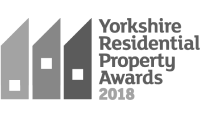Since its conception in May 2003, LinkedIn has become the world’s largest professional network and an essential tool in every professional’s career toolkit.
With 875 million members worldwide and 34.9 million in the UK, it’s crucial to have a LinkedIn profile if you’re seeking new employment, opportunities, or clients.
Whether you’re a recent graduate or a seasoned executive, a LinkedIn profile enables you to promote your personal brand, showcase your skills and achievements, and expand your network.
With a compelling LinkedIn profile, you could land your dream job.
Let’s look at creating a LinkedIn profile that stands out from the crowd and leaves a lasting impression on potential employers, clients, and colleagues.
1. Perfect your profile photo
The first three things a potential employer will see of you on LinkedIn are usually your name, your profile photo, and your headline.
Your LinkedIn profile photo must be recent, be of your head and shoulders, and accurately represent your appearance.
Dress like you usually dress for work (or aspire to) so you’re instantly recognisable to those who have met you and wish to join your network.
We wrote a guide to professional headshots to help, and you’ll find plenty more tips for taking an eye-catching professional LinkedIn profile photo online.
2. Add a background photo
The background photo is the second visual element on your LinkedIn page, so think of it as a second opportunity to grab someone’s attention and make you memorable.
Leaving the background banner on the default image gives the impression you don’t know how to use LinkedIn or what you want from your career.
Consider the message you wish to convey through your profile and capture that in an image to showcase who you are and what you stand for.
You could optimise your LinkedIn profile by uploading a background photo of:
- your workspace or offices (or a stock photo to represent them)
- a landscape shot of the city or town you work in
- your product or service
- your clients (or a stock photo that represents them)
- tools related to your profession (a camera for a photographer, for example)
- something that represents the end goal for your clients (like a new home, a dream job, or a holiday of a lifetime).
3. Hone your headline
Your LinkedIn headline is 120 characters, allowing you to promote your personal brand to your network and beyond in a succinct and snappy way.
Your headline will be seen in LinkedIn search results, by your network’s contacts, and when you comment on posts — it needs to be intriguing, enticing, and unique.
Many job seekers set their headline to their current job title, which is a wasted opportunity when using LinkedIn to further your career. Visitors to your page can find your current employment information further down your profile, so use your headline to promote your skills and passions.
The character limitation can be tricky, but you need to summarise your experience, skills, and expertise in your headline while highlighting your USP.
Great examples of LinkedIn headlines might inspire you to get creative.

4. Slay your summary
Once you’ve reeled someone in with your profile photo and headline, they’ll read your summary — so let’s make sure it’s worth reading.
It can be tempting to rush tasks like a LinkedIn summary, but it could mean the difference between someone contacting you about a position or not.
Start with a robust and captivating sentence to hook the reader. From there, highlight your key strengths, skills, and experience, and what makes you stand out from other professionals in your industry. Remember to state your career goals, too.
Include specific examples when discussing your achievements to illustrate your expertise and show how your hard work has impacted your career so far.
Use a sprinkling of keywords but try to avoid buzzwords and jargon, which could be unappealing and confusing to those outside your industry.
Don’t fear letting your personality shine through — people want to know who you are, not just what you’ve achieved professionally.
Keep your summary concise, and use paragraphs and bullet points to break the text up.
End with a call-to-action, whether it’s a request for those interested in your work to connect or an invitation to DM you for further information.
5. Share your skills
It’s easy to add skills to your LinkedIn profile — if anything, it’s too easy.
While building out your skill list is recommended, going overboard is not. Select those skills that are highly relevant to your current position and any positions you’d want to move into next.
Look at LinkedIn’s list of the most in-demand skills of 2023 and match your skills with it to deliver a seriously tempting skill list to page visitors.
6. Craft regular content
Once you’ve completed your LinkedIn profile, it’s time to put yourself out there by sharing and creating content.
When sharing content, ensure it’s highly relevant to you and written by leaders in your industry.
Carefully craft your posts to showcase your expertise and personality.
Remember to fact-check and spell-check all content before you click that ‘Post’ button.
Final thoughts
We’ve covered the critical areas of a LinkedIn profile page, but ensure you complete the entire profile — including work experience and education — so potential employers get the whole picture.
Once you’ve done the work on your profile, you’ll need to be active on LinkedIn to attract connections. Make sure to interact with others and collect skill endorsements and recommendations along the way.
A well-written and targeted LinkedIn profile can deliver dream career opportunities directly to your inbox.
Once you’ve sorted your LinkedIn profile, it might be time to search for a new professional rental property. At Pickard Properties, we provide quality housing in and around Leeds, all with a short and simple commute to the city centre.



